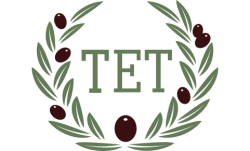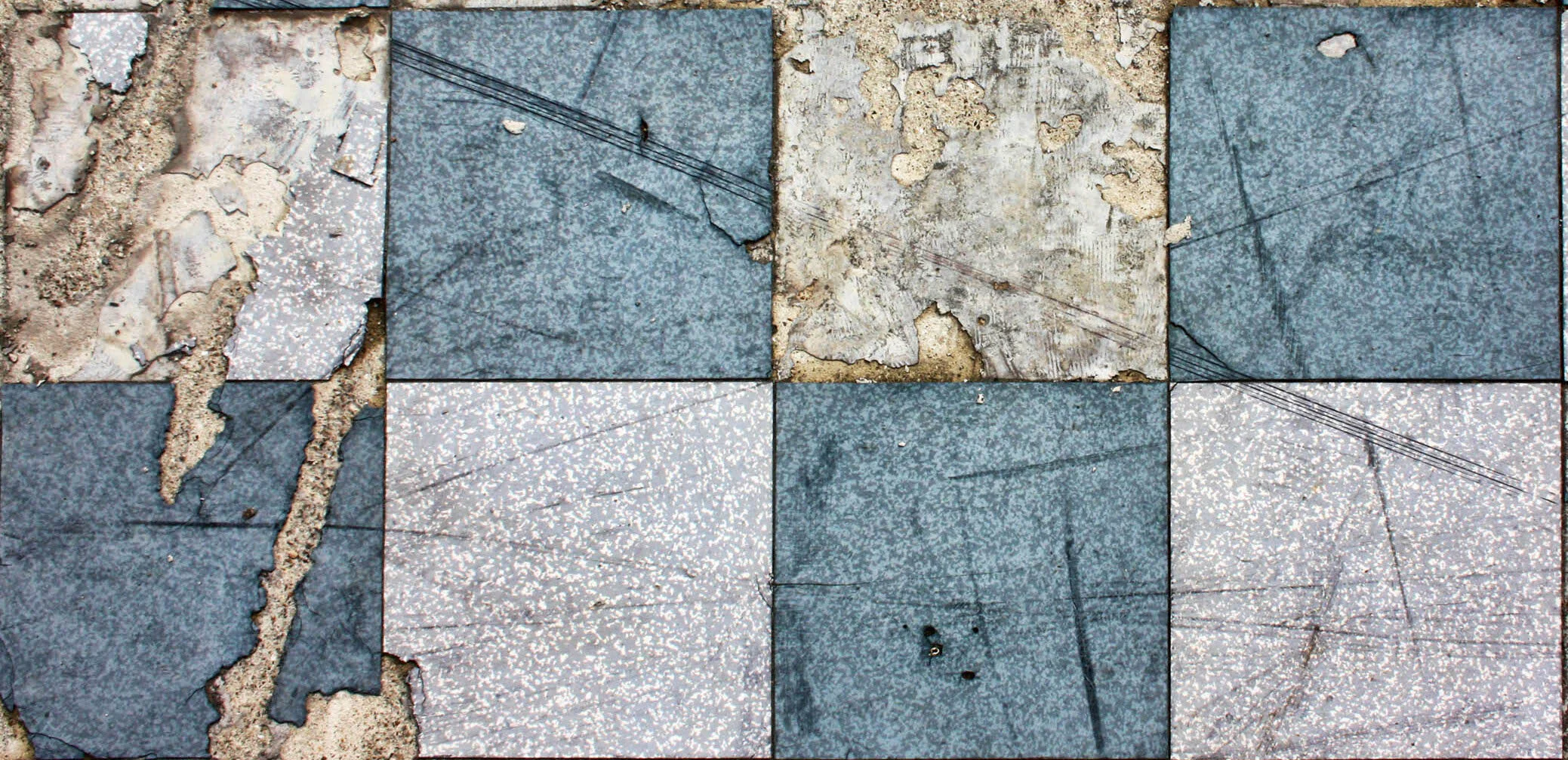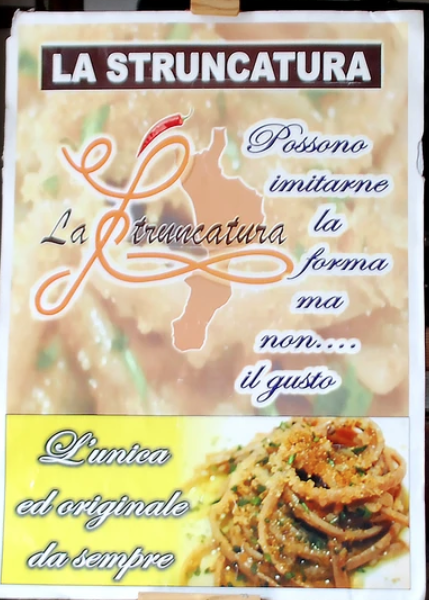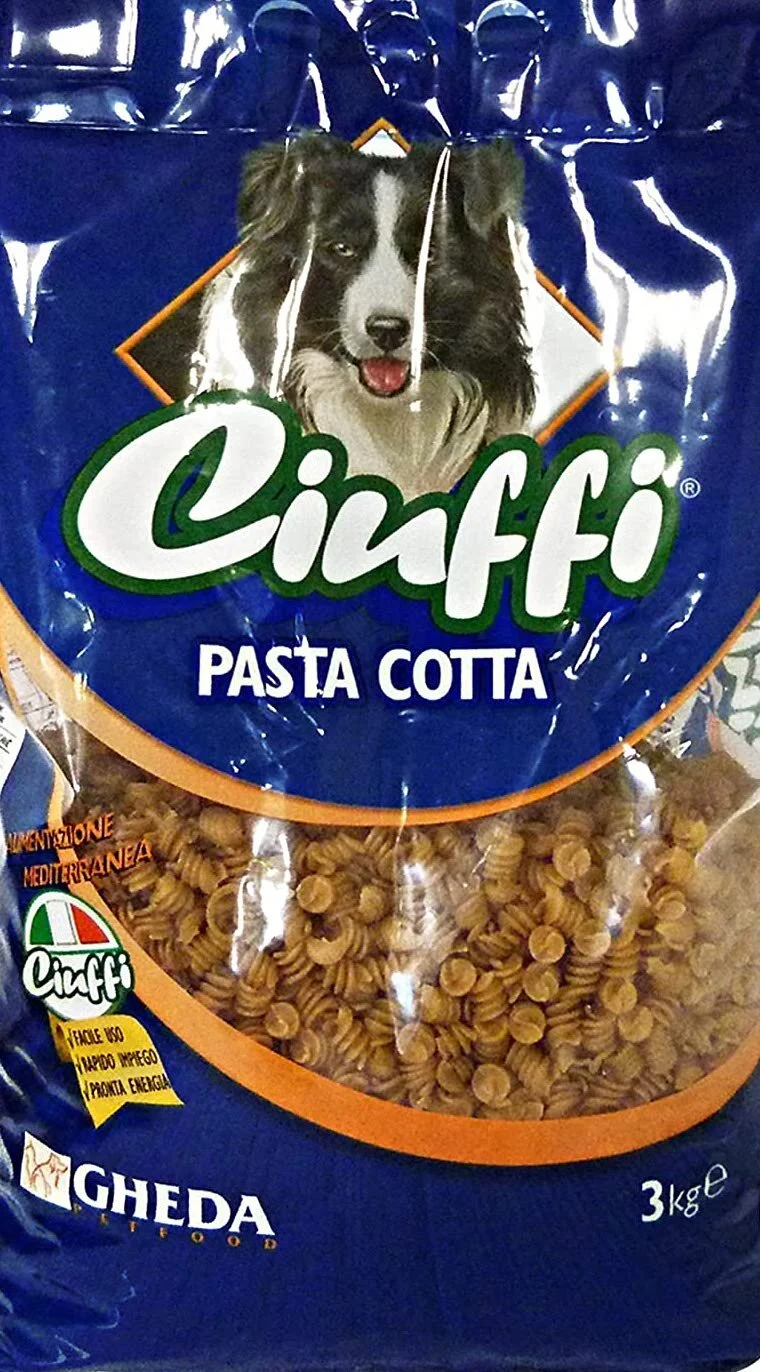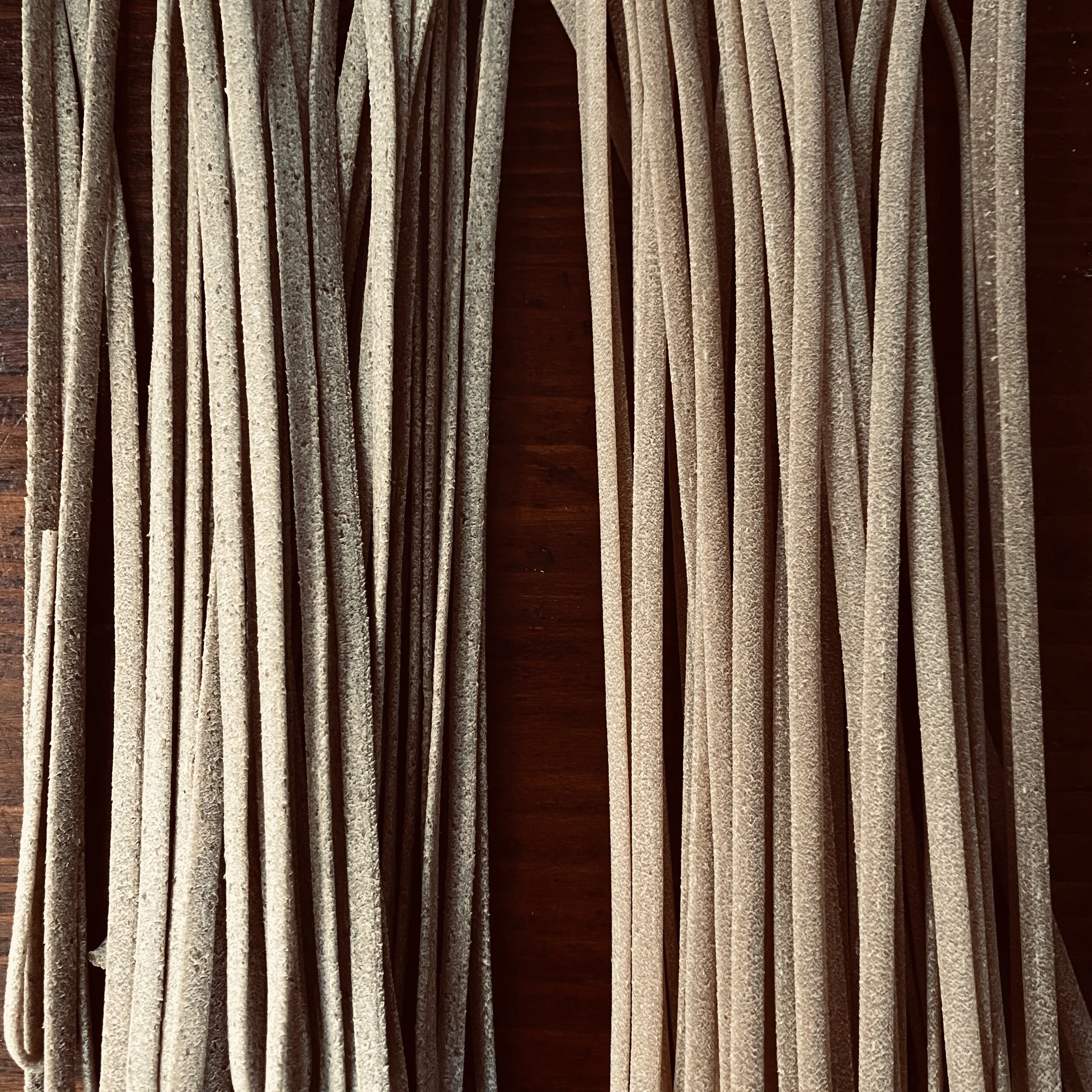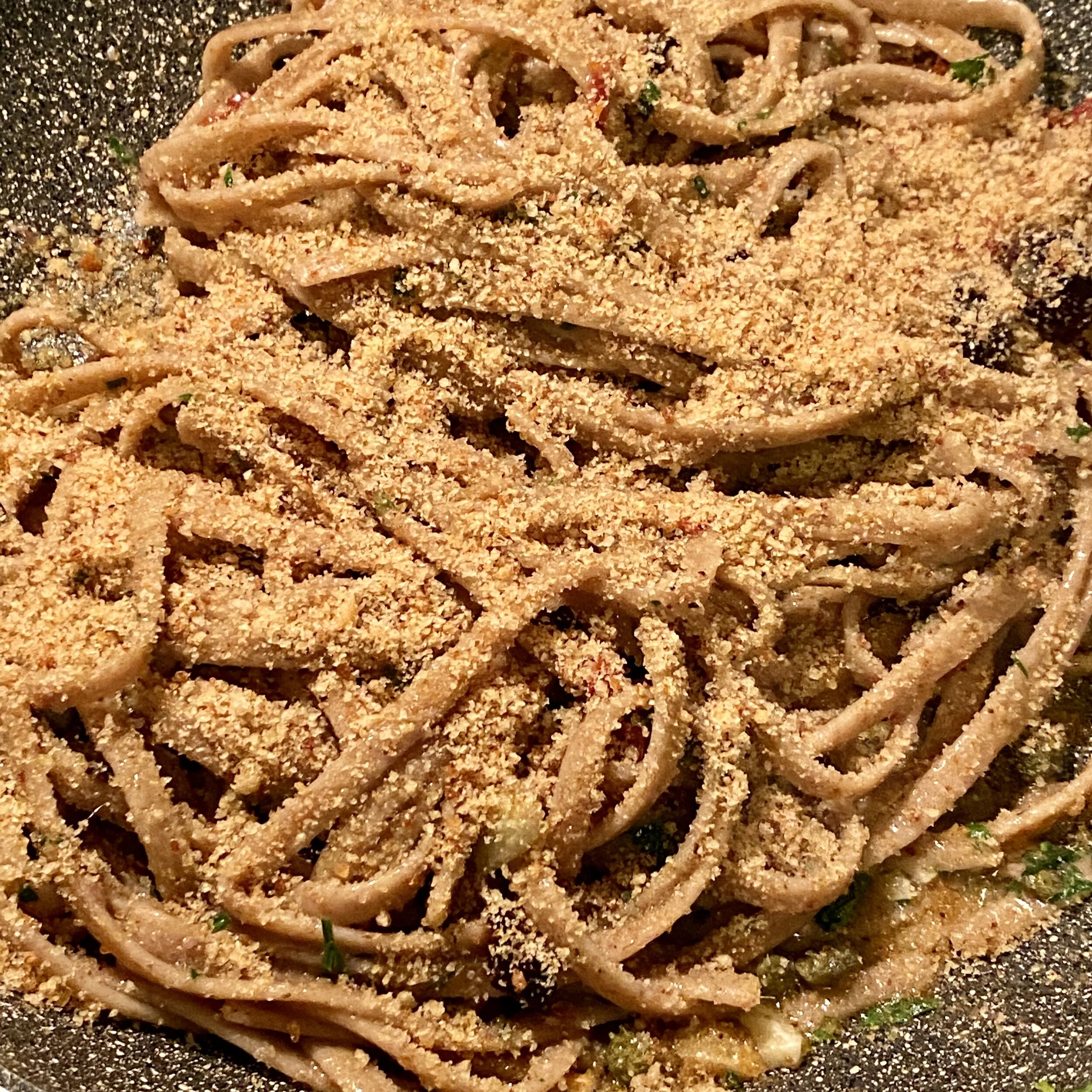his is the third episode in the Pasta and Perseverance series. Like the cordelle featured in Part II, this pasta comes from Calabria, however, its story twists and turns down an entirely different trajectory. Struncatura is one of countless examples of necessity being the mother of invention, nose to tail tales of repurposing scraps and odd discard bits - but what were the odds that a food with such desperately humble origins would rise from shame to fame?
Unlike the other two pastas I chose for this series, barley suddhi and rye cordelle, which are falling into obscurity, struncatura has become a cultural attraction and a lucrative business. Traditions are created from past practices - often through the rose-colored glasses of moderns looking back on foodways once the conditions of hardship from which they originate have been forgotten and given a new coat of paint. If you have your grains of salt ready, I’ll walk you through my investigative journey to tease out the facts and myths of the rags to riches (well, sort of) story of struncatura.
Brass tacks
Let’s begin with the basics: struncatura is, historically speaking, a dried linguini-shaped pasta product made from the rough, floury stuff swept up off the floor after the milling process. We will suppose that the floor was at least moderately clean to begin with - or maybe even very clean knowing that the residual would be swept up and made into food. That would have been a basic act of human decency, although there are many exemplars from history where the latter has been lacking or, let’s say, absent. The broom is another issue, but we must press on.
It’s doubtful that description triggered a salivation response. The notoriety of struncatura rests largely on its shady past as a product that was sold illegally or sotto banco - under the table. Although pasta may seem in and of itself to pertain to the cucina povera, for many it was a luxury item, quite outside of their economic reach. Struncatura provided the poor with an affordable way to partake in the common denominator of Italian culinary culture, allowing them to put pasta, such as it was, on the table when they could afford no better. Curiosity was roused because struncatura continued to be sold secretly - even when better could be had. Had it become a tradition? If so, there were profits to be made - both culturally and economically. Thus, the mythmaking machine was set in motion full throttle.
The Linguistic Lens
Before we get to the creation stories, let’s unpack struncatura linguistically. Don’t get scared off! This is actually pretty cool. Struncatura is Calabrian dialect for the Italian stroncatura, but that is lipstick on a pig, as it were. Both come from the verb stroncare, meaning to forcibly break off. The suffix -tura signifies the bringing together of various elements to form a collective. So what we should get etymologically is a mass resulting from a bunch of stuff that has been broken off. Steady. Stay with me.
But struncatura is an irreducible conglomerate produced from the act of sweeping. There are two words for the verb ‘sweep’ in Italian: spazzare and scopare. If we do our linguistic trick on the word spazzare, we get spazzatura, which means garbage. No matter how you slice it, that word has a stigma that resists sugar coating.
Scopatura on the other hand, does indeed mean ‘sweepings’, the stuff that ends up in a dustpan. But no one ever uses that word. Here’s the rub: scopare is more commonly used in its colloquial meaning corresponding to the infinitive form of the ‘F’ word, which nixes it at the starting gate as the name for a pasta. Fine. So why ‘stroncatura’?
The gospel according to Pino:
One lone wolf, engineer Pino Sciarrone, who fashions himself as a town historian, has publicly protested the claim of ‘sweepings’ as the origin of struncatura.
The birthplace of scruncatura’ according to Sciarrone.
As he tells it, given the unregulated hygienic conditions in the past, even if you were poor, no one in their right mind was going to eat pasta made from flour swept off the floor. So…
In the beginning (1928), three families in the Calabrian municipality of Gioia Tauro (you’ll need that name for later) opened the town’s very first pastificio or pasta workshop.
As part of the processing, pasta strands were hung to dry on beams but, Sciarrone says, in order to fit them into their sky-blue packages, the strands all had to be the same length before they dried. So, they were cut to size. Stroncare in Italian is a brutal, abrupt action. It doesn’t work for me with soft, yielding pasta about to be put to dry in the rafters. But for argument’s sake, let’s move on. Sciarrone says that the next day, the crusty clippings were gathered together in a clump (ding: a collective), softened with olive oil, and pushed through the extrusion press once again. At that point, he continues, the dough was dark from having been left out and, when it was pushed through the brass die, it produced a coarse product with rough edges - a description which characterizes struncatura.
Sciarrone’s claim attempts to relate the product to the meaning of verb stroncare, but he also points out that as this was the only pasta workshop in town, their second-round pasta made from reconstituted dough clippings was the original struncatura. It was apparently sold as a cheap by-product, the quality having been sacrificed by the way the dough was handled after the initial production. In fact if their intention was to put the clippings to good use, leaving them until the next day and mixing them with oil and not water to soften them is somewhat lacking in logic and would needlessly lower the quality of this already class B product.
While it is not only understandable but probable that the company would try to eke out as much profit as they could from the raw materials at their disposal, there is no evidence in oral histories or the collective memory of the community that this product was locally called struncatura.
Voiello’s sky-blue packaging reflects the color of traditional pasta wrapping paper.
As a historian, I find it curious that the pasta needed to be cut to fit into packages. Cutting would have created extra work that would, in turn, create food waste that needed to be dealt with so as to minimize the impact on the bottom line. Furthermore, the standard practice for small pastifici was to sell wholesale in bulk. Retail shops, sometimes their own, would sell in bulk to customers as well, wrapping the pasta in sky-blue sheets of paper that continue to be referenced on some brands of pasta.
I would beg to differ with Sciarrone on one point: when people are poor enough and hungry enough, they will indeed eat off the floor.
Ferdinando Torre - Founding Grandfather of Struncatura
Struncatura has become the culinary claim to fame of the Calabrian flatland municipality of Gioia Tauro, located in the toe of the boot between the Tyrrhenian Sea and the Aspromonte mountains. There you will find the pasta shop Ditta Torre - La Struncatura where, according to the Torre sisters Stefania and Giovanna, it all began. The door of the shop is dominated by a poster declaring: ‘They can imitate the shape, but not the taste. The one and only original.’ Even the name of the shop is a play on words asserting their preeminence: take away one of the ‘r’s and you have dittatore - or ‘dictator'.
Teasing out an accurate story has taken some doing, so have salt within reach.
Gioia Tauro had active mercantile ties to trading towns along the Amalfitano coast particularly in the late 1800s when developments in the manufacture of durum wheat pasta paved the way to a rapidly expanding market. After WWI, Stefania recounts, “Our grandfather brought struncatura to Gioia Tauro in 1919 from his village on the Amalfi coast. No one here knew the pasta because it was a product that was only made in Campania.” Fact check: Apparently, no one in Amalfi knew of the pasta either. Indeed, there is no record whatsoever of this product being made or distributed in the region of Campania.
Pre-cooked pasta feed has long been a common way to cheaply feed pets, although veterinarians do not recommend it.
Normally the by-product sweepings were recycled as a feed pasta intended for animals. Low quality pasta intended as animal feed is still sold commercially as pet food. But there were plenty of people in Calabria who were hungry enough to pay the low cost for this pasta, despite the dubious conditions under which it was derived.
Pass the salt.
In a Munchies interview with the clickbait title: “The Illegal Calabrian Pasta that Chefs Now Clamor For,” the Torres never once mention the central attraction which qualifies stroncatura as an object of fascinating horror. According to the article, the pasta was derived from “various grains of durum wheat leftover in the sacks from the pasta workshops.” What happened to the sweepings? How many grains could possibly have been left over in the sacks? Why would pasta made from these grains be ‘illegal’?
The women claim that it could only be sold as under the table because whole wheat pasta was unregulated and so could not bear a label. Stop. There are two serious points of confusion here: firstly, it was not until 1967 that a quality control law intended protect Italian pasta from foreign competitors was put in place requiring all dried Italian pasta to be made exclusively from refined durum wheat flour - or semolina. Prior to that, the lack of legal regulation left the matter an open field. Indeed, throughout the fascist era, whole grain products were encouraged as extenders, although socially frowned upon. The law would not be amended to allow whole grain pasta until 2001. This meant that from 1967-2001, any pasta labeled integrale had to be made with refined durum wheat and added bran. However, this is an entirely different issue from sweeping bran and endosperm dust off the floor and mixing it with water in Campania to sell to hungry folks in Calabria. And, once again, labels, brand names, and sealed packages were used by larger industries. Most pasta businesses sold in bulk and were packaged on demand in the retail shop - a custom that the Torre sisters maintain today with their struncatura - although they wrap it in light brown paper used for bread as has become the tradition with this pasta.
Ditta Torre still imports its struncatura from Campania, but today it is made to standardized specifications by a miller who produces the artisan product exclusively for them using their own combination of durum wheat from Campania, Puglia, Basilicata, and Lazio. I told them that I am relatively well versed in wheat varieties and asked if they might elaborate a bit more. No, that would mean revealing the secret of their success.
Not to rain on their parade, but I asked how it was possible to have a standardized product that faithfully replicates one that occurred by pure happenstance. I knew the answer to the question, but I wanted to hear them say that they created a formula product that they were satisfied would establish a market demand for this pasta, one that they could sell alongside a great story. They met me halfway.
Muscling in: an imposter’s tale
The pasta company Pastificio Gioia has an adjoining restaurant, and for years tourists asked after the legendary struncatura. The owner, Carlo Angilletta, did some research and, in 2014, based on what he uncovered, he and his associates came up with a formula intended to appease/please customers, something delicious that paired well with the struncatura myth. They unapologetically sell a Calabrian (not Campanian) product and make no claims to authenticity. That’s not to say they didn’t make a studied effort to conceive a blend that would best resemble the sweepings of mills in the area: whole grain durum wheat (semolina), rye, and refined durum wheat (semolina).
The work bench at Pastificio Gioia
They make two types of struncatura: the first is more generic made with Italian flours, and the second is visibly rougher made only with local flours from the Aspromonte area, known in particular for rye production. The idea that Calabrians wanting this sort of pasta would have needed to outsource is rather precious given the consumer function it served. Angilletta confirmed that there are no indications whatsoever that this was an exclusively Campanian operation, although he doesn’t deny the possibility that trade with Amalfi may have been the catalyst for the idea. Oddly, Slow Food describes it as a dough prepared by women in their homes and eaten by the poor, indicating that the sweepings were sold as flour, which throws a wrench into both Sciarrone and Torre’s claims - significantly making it a miller’s, and not pastaio’s, product.
A side-by-side look at the two varieties of struncatura made by Pastificio Gioia. On the left is the more rustic one made with locally sourced ingredients.
In Angilletta’s research, locals told him that the pasta had to be sold under the table for the very fact of it being unhygienic and the obvious reality that the contents would have been inconsistent from one batch to the next, as were the conditions under which it was prepared. It might have been sitting on the floor for days before it was swept up, attracting dampness and who knows what else, not to mention… the broom. But what pushed it from the realm of merely dubious to outright contraband was a consumer protection law from the 1800s banning the sale of foodstuffs that were rotten, diseased, or otherwise unfit for human consumption, which would have included refuse scattered on a mill floor. But so long as there is market, a product will persist, and sales continued unabated. Over the years, the hush-hush aura would lift it from its humble origins and lead to its re-invention as a foodie desideratum.
On August 7 in Gioia Tauro, there is an annual Struncatura Festival to look back on this chapter of their local culinary trajectory. This year it will be held on the 17th as covid-19 considerations have pushed the date back. Struncatura was featured at the Milan Expo 2015 as one of Calabria’s many celebrated culinary traditions, so it has gone fully mainstream - but it was represented by the rival neighboring town Palmi, who lay their own claim as its founders as a way to feed the hungry hoards after WWII.
Epilogue
In the end, this isn’t so much the story of how a pasta with inauspicious beginnings triumphed, but the irony of how pasta artisans, looking to make a buck from selling a tall tale, made a valid contribution to the history and evolution of Italian pasta. Through their efforts to recreate the taste and mouthfeel of struncatura from the mind’s eye of a curious public, they ended up making a pasta product that is delicious in its own right - and sadly is unknown in the rest of Italy.
The local version of struncatura from Pastificio Gioia was truly a gastronomic revelation and one that I recommend highly. It smells like hay - but in the more than good way. The pasta I ordered from Ditta Torre never arrived.
I don’t know whether or not Pastificio Gioia ships internationally but, if not, drop me a line and I will fix you up.
Please note, I pay for all of the materials used in my posts out of pocket; I am sponsored by and beholden to no one. But damn, if someone wants to sponsor me - let’s talk.
Struncatura - la ricetta
Serves two as a main course, and 3 as a primo piatto.
There is no fixed recipe for struncatura, but there are some basic requirements and then various optional ingredients. I used everything and it was so good I had to laugh.
Ingredients:
200g struncatura linguini - or the roughest whole wheat linguini you can find
3-4 tbsp olive oil
3 garlic cloves, smashed and chopped
3-4 anchovy fillets, chopped
2 dried chilis, chopped - or flakes to taste
40g bread crumbs toasted in olive oil
1 handful parsley leaves, chopped
[optional items]
10-15 cured black olives
3 dried tomatoes, thinly sliced
1-2 tbsp capers, chopped if desired
The mis en place
Instructions:
Bring 3 liters of water with 20g of salt to the boil. I generally don’t make specifications about the salt to water ratio as everyone has their salt preferences (mine tend towards salty) so, as a guide, I’d recommend using a little less than you are used to as the sauce itself is quite saporito.
Fry the garlic, chilis and one anchovy in olive oil, allowing the anchovy to disintegrate.
When the pasta is almost al dente, strain it into the skillet, pour a ladleful of the pasta water on it and toss. Add the remaining ingredients except the bread crumbs. Cook until the water has absorbed.
Late addition to the post: It is best to add the breadcrumbs after plating instead of tossing so that they remain crispy.
Plate immediately. This pasta does not require cheese.
It’s excellent and makes for a great dinner party story.
